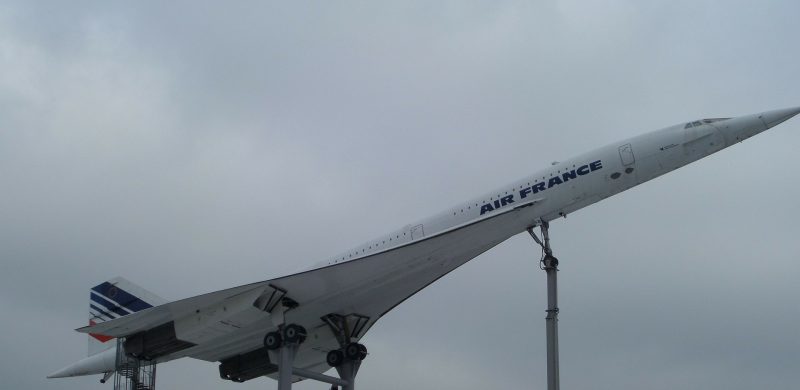
As a kid, I remember hearing stories from my dad and how it shattered windows at the then Harare International Airport. The plane was carrying Michael Jackson apparently and people around the airport were said to be shaken by the noise and sonic boom it made. An American firm is promising the return of supersonic passenger aviation, with transatlantic airfares “about the same price as today’s business class tickets”.
Boom, based in Denver, says London-New York will cost £2,000 one-way and take just 3 hours 15 minutes. With a planned cruising speed of 1,451mph, the plane is almost 100mph faster than Concorde. Chuck Yeager broke the sound barrier 70 years ago, and Concorde first flew in 1969. But British Airways last flew faster than the speed of sound in 2003, with the supersonic fleet dispersed to museums.
The firm is building an aircraft called XB-1, “a one-third scale realization of the Boom passenger airliner”. It is claimed to be the first independently developed supersonic jet and history’s fastest civil aircraft. “It is under construction now and will fly next year,” says Boom, with scheduled supersonic services on a 55-seat plane by 2023.
Subsonic flight tests will be conducted in Colorado, with supersonic flight proving taking place near Edwards Air Force Base in California. Virgin Galactic, Sir Richard Branson’s space venture, will be involved in the tests.
Concorde was fitted with noisy and thirsty military engines. The 1960s technology used for the Anglo-French project was extremely challenging, with the aluminium airframe extending by about 15 inches due to the heat of supersonic flight. Boom will use carbon composites, which are lighter and expand much less with heat. The testbed aircraft uses three General Electric J85-21 turbojet engines.
The firm is inviting American executives to “Leave New York at 6am, make afternoon and dinner meetings in London, and be home to tuck your kids into bed.” The 11-hour flight time from San Francisco to Tokyo will be halved, again making day-trips possible. And the 7,500-mile Los Angeles-Sydney run will take under seven hours: “Leave LA at 7am, enjoy an operetta in Sydney, and be back before midnight.” promises the company.
The small print reveals that the maximum range is 5,180 miles (4,500 nautical miles), less than London to Mexico City or Buenos Aires. The firm says: “Routes over 4,500nmi include a brief tech stop, included in listed flight times. Passengers do not need to deplane or exit their seats.”
It is telling airlines: “The breakthrough Boom airliner allows you to offer Mach 2.2 flights profitably at the same fares as subsonic business class.
“A major problem with Concorde is that it had more seats than could be filled at the required prices. The Boom aircraft has 55 seats, similar to the premium cabin in a typical widebody aircraft.” Since the demise of Concorde — hit by high oil prices, low demand and concerns about safety following the 2000 crash in Paris — plans for high-speed civil aircraft have foundered.
Sir Richard Branson has unveiled the prototype. The XB-1 has been nicknamed “Baby Boom” and is claimed to be the world’s fastest civil aircraft ever made and promises to give passengers “affordable” supersonic travel. While the first commercial flight is not expected until 2023, the price of a flight between London and New York is currently set at £2,500 each way.
The new aircraft has a cruising speed of Mach 2.2 or 1,451mph, which is 10 per cent faster than Concorde’s speed of Mach 2 (the speed of sound is measured as Mach 1) and 2.6 times faster than other airliners. The new planes are set to carry 40 passengers at a time.
“I have long been passionate about aerospace innovation and the development of high-speed commercial flights,” the Virgin founder said. “As an innovator in the space, Virgin Galactic’s decision to work with Boom was an easy one. We’re excited to have an option on Boom’s first 10 airframes.”
Despite other aerospace companies such as Boeing and Lockheed Martin developing their own supersonic spacecraft, Virgin and Boom are hoping to beat the competition to market as the aircraft uses existing technology that has already been approved by regulators.
Boom’s development of the new aircraft has been done in partnership with Sir Richard’s Spaceship Company, which is attached to Virgin Galactic. The company will provide engineering and manufacturing services to Boom, in addition to test flight support and operations, and Sir Richard has signed an option to buy the first 10 airframes.
Ahead of the unveiling, Blake Scholl, CEO and founder of start-up Boom, said: “60 years after the dawn of the jet age, we’re still flying at 1960s speeds. “Concorde’s designers didn’t have the technology for affordable supersonic travel, but now we do,” he said, adding that the company is looking forward to the first Boom flight late next year.
The subsonic test flight of the XB-1 will take place east of Denver, Colorado, while the supersonic test flights will take place near Edwards Air Force Base in Southern California.
@nelson.madzima





